Conserving the Donnithorne Wicked Bible

Pre-conservation and first steps
When, in February 2021, the Donnithorne-Christchurch Wicked Bible arrived in the care of Sarah Askey, the book conservator tasked with the repair and conservation efforts, it was in very poor condition. The bible lacked covers and end-sheets, and the first and last folios were detached, while the second and second-to-last folios were partially detached. Without the support of the boards, the spine had warped inward, and the sewing structure was showing its age, and was fragile and frayed. Small amounts of dry mould were evidence of historic water damage or poor storage conditions in the past. The first step in the conservation process was to clean the surface of the bible. A smoke sponge and a soft goat-hair brush were used to gently wipe the head, tail and foredge. This partially revealed the surviving gilding hidden beneath the grime covering the book’s edges. Due to the risk of causing additional damage, it was decided that actual cleaning of the pages would not be undertaken, and mould removal was deferred to later in the treatment process after the weak sewing was stabilised.
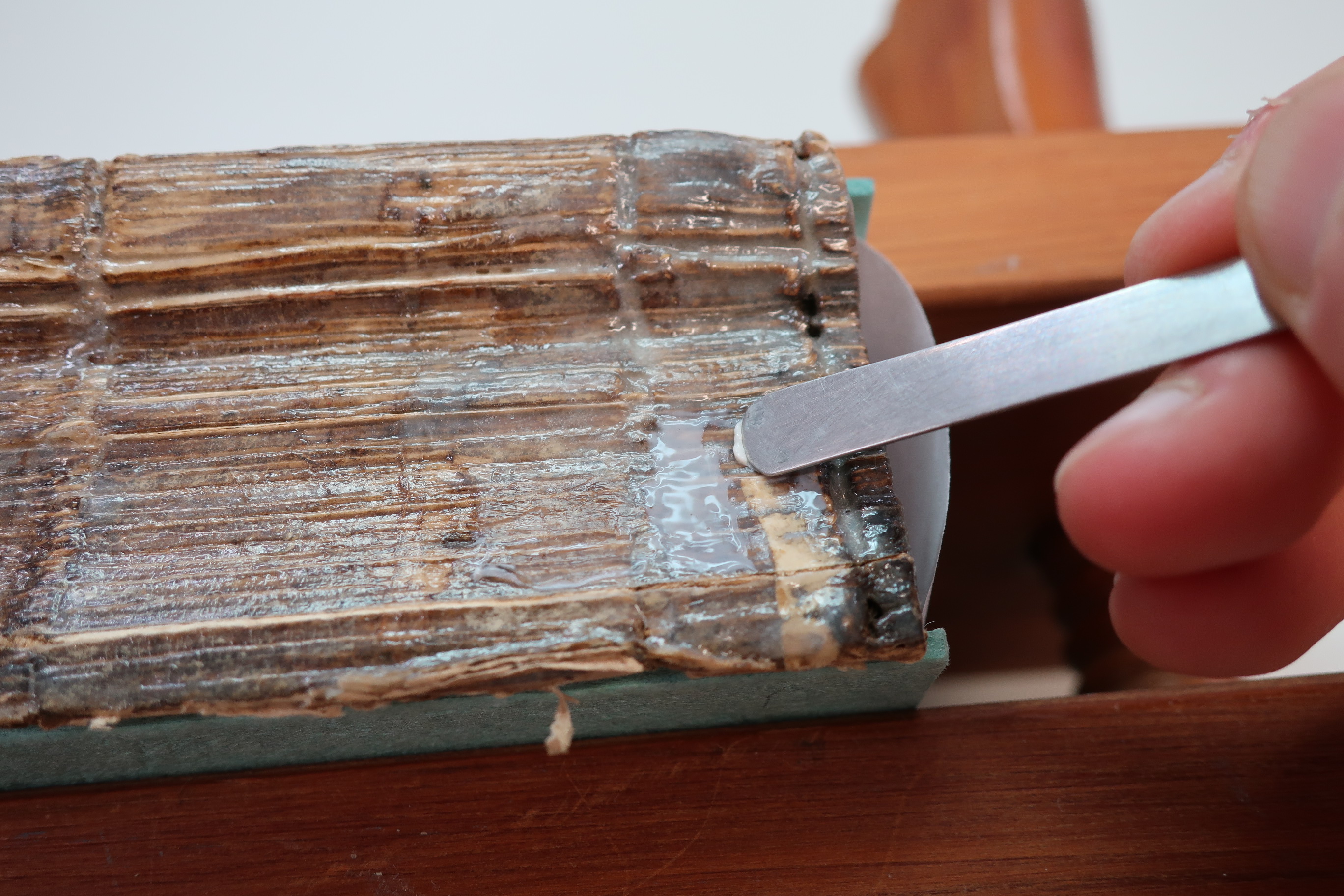
Glue removal
A modern synthetic glue covered the spine of the book, likely applied by a previous owner to stabilise the sewing structure. This glue was applied on top of the animal glue that is original and was used during the book’s construction in 1631. The stiffness of the synthetic glue was hampering the spine’s flexibility, and book handling improved significantly after its removal. To remove the synthetic glue while ensuring that the underlying animal glue was not disturbed, gel poultices were placed on the synthetic glue to gradually introduce moisture into the glue to soften it. Once the glue softened, it was carefully removed with the aid of a small spatula. This procedure was applied to just small sections of the spine at a time, then repeated incrementally until the majority of the synthetic glue was removed.
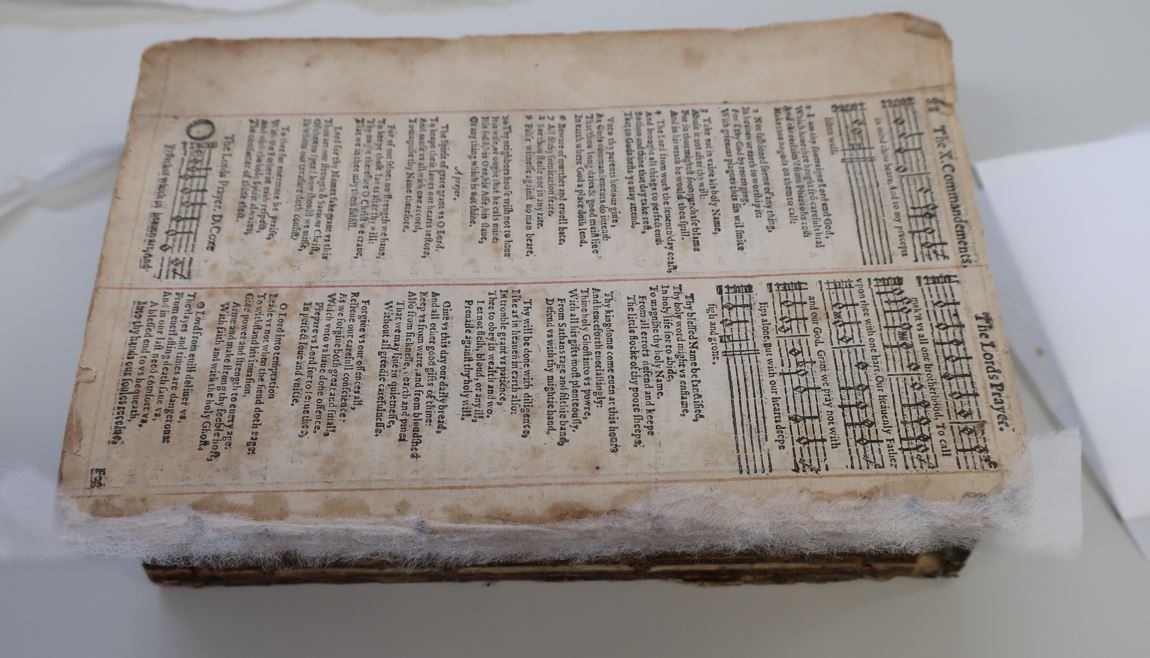
Supporting weak folios
The second and second-to-last folios that had been partially detached were fully reconnected to the book with Japanese paper. Strips of Japanese paper were torn to create a ‘feathered’ edge, adhered to the partially detached folios and then folded over and adhered to the spine of the book with wheat starch paste. ‘Feathering’ the edges allows a gradual transition between the folio paper and the Japanese paper that distributes stress over a larger area, reducing handling fatigue and extending the lifetime of the folios.

Preparing detached folios
The first and last folios that had become fully separated from the book needed to be repaired, ‘guarded’ and reattached to the book. The large tears in these folios were repaired, and the weak edges were lined with light-weight kozo (Japanese paper). They were then attached to ‘guards’ (wide strips) of Japanese paper that were shaped – torn rather than cut, to produce a feathered edge – to conform to the irregular contours of the folios’ damaged edges. The guards were then folded over, creating a fold which could later be sewn through to reattach the leaves.

Sewing extensions and folio re-attachment
A model was used to investigate several different potential methods to add extensions to the original cords (sewing supports) so that the detached folios and new end-sheets and boards could be resewn to the bookblock. This experiment led to the decision to make sewn cord extensions. Two needles were used to sew in new threads for the cord extensions; a hollow hypodermic needle was used to guide the sewing needle through the original sewing holes without accidentally piercing the original cords.

Spine lining and support
To avoid concealing visual evidence of the historic binding, it was originally hoped that weak areas of the original sewing could be sufficiently stabilised with new sewing, rather than a new spine-lining. However, during model testing, new sewing failed to provide the necessary support, so the spine was lined with Japanese paper and wheat starch paste. While the paste was still damp, the concave spine was massaged into a flat profile, and clamped and weighted for several days to allow the warping corrections to take effect. Though spine warping was temporarily corrected, it returned shortly after.
After lining the spine, the book was deemed stable enough to begin internal treatment. The spine warped again after being handled for internal treatment, resulting in the foredge protruding again. Because of the protuberance of the foredge, the conservator chose to do the internal treatment before attaching the covers, allowing the covers to be properly sized to the dimensions of the book with a warped spine, which is slightly wider than the book with a straight spine.
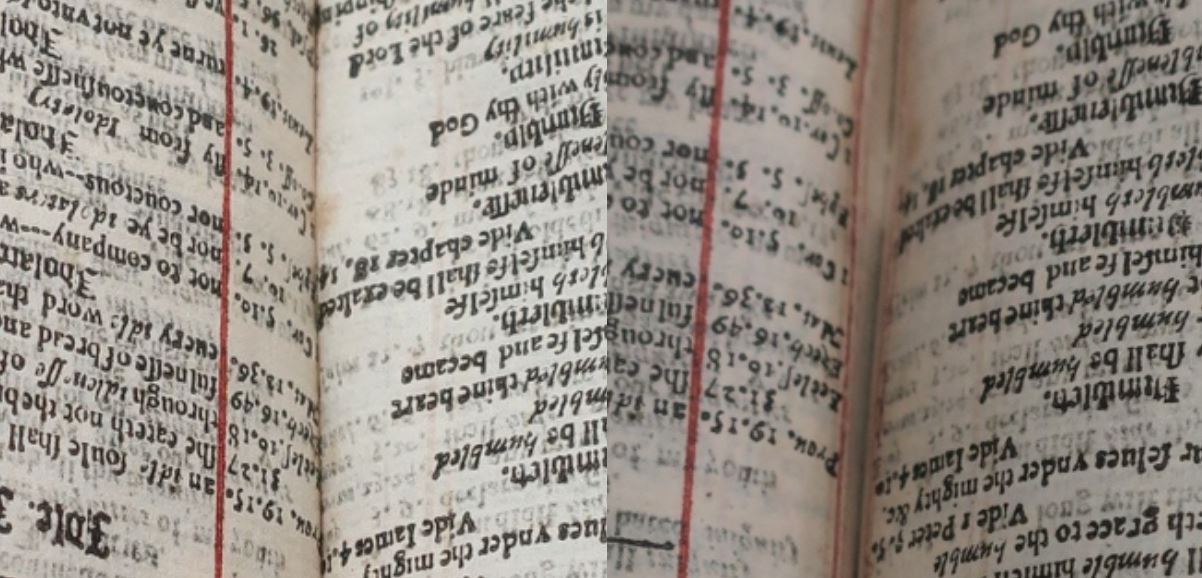
Internal treatment
The internal treatment included the aforementioned mould removal, but also separating pages that had become stuck together; this is because the ink used in the red ruling is water soluble and had fused together due to significant water damage to the book. Where adhesion was very light, separations were carried out dry by sliding a Teflon spatula between the pages. Where adhesion was excessive, slight humidification was required to allow the ink to release without tearing the paper. Damage to the book’s folios was evaluated in terms of how likely it was to worsen with handling. Rips and tears that were classified as such were repaired with Japanese paper.
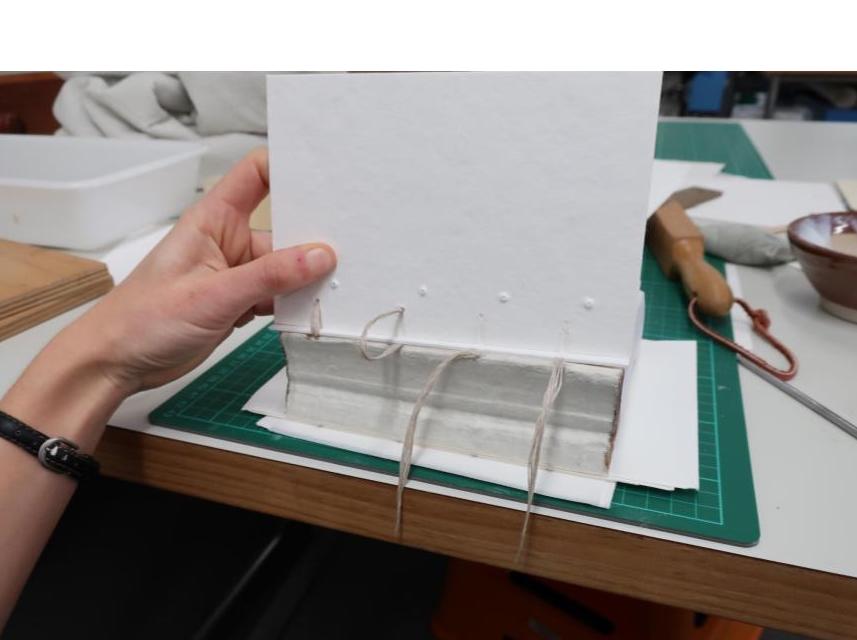
Board attachment and covers
The new boards were then attached. These were made of a pasteboard of five layers of cotton linter laminated with wheat starch paste. To ensure protection, these boards were sized to extend past the book’s protruding foredge. The boards were then laced-in using the cord extensions. Once the boards were attached, the final step was to create a non-adhesive cover made from heavy weight cotton rag paper. The cover was folded around the boards, and secured with twisted strips of Japanese paper laced through the cover and boards at the foredge.
Despite the fact that this new conservation binding does not recreate the aesthetic of what would have been the original binding this binding style was selected because this project is a conservation effort to ensure the long term survival of the book, rather than a restorative effort to return it to a state that is as similar to its original state as possible. With the conservation effort complete, the handling characteristics have improved significantly. The book is stronger, less fragile and is assured to survive long into the future.
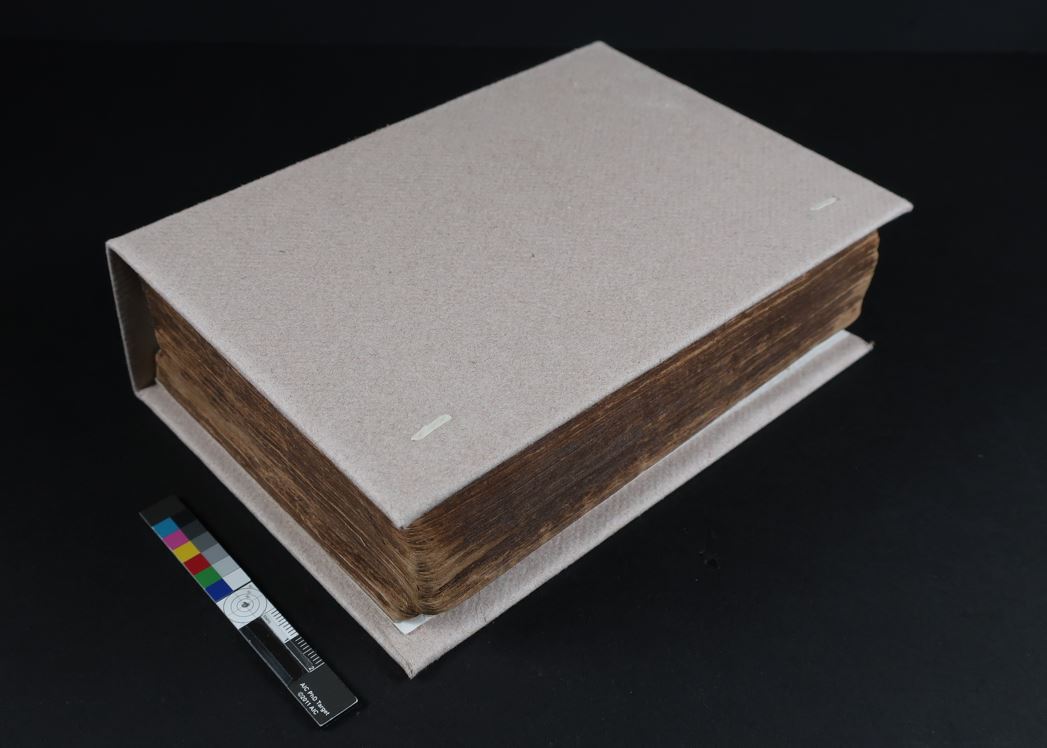
Quillan Taylor based on Sarah Askey’s 2021 conservation report. All images courtesy of Sarah Askey.
Reference: S. Askey, CN-04627 Wicked Bible Conservation Report, Sarah Askey, Wellington, 2021. [available for on-site consultation in the Macmillan Brown Library]
